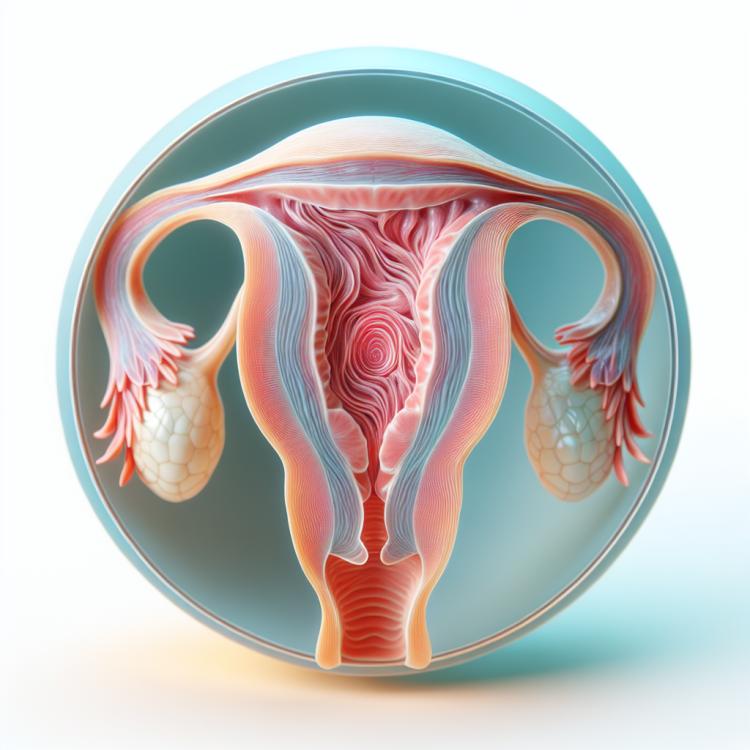
Cervical erosion: causes, symptoms, and treatment methods
- Understanding Cervical Erosion
- Etiology of Cervical Erosion
- Clinical picture in Cervical Erosion
- Expert opinion on the treatment of cervical erosion
- Methods for diagnosing cervical erosion
- Principles of treating Cervical Erosion
- Measures for the prevention of cervical erosion
- Amazing features of cervical erosion
- FAQ
Understanding Cervical Erosion
Cervical erosion is a disruption of the integrity of the cervical epithelium, manifested as pathological changes. Understanding this condition is important for preventing complications and choosing the optimal treatment method. Erosion can be caused by various factors, including hormonal changes, the impact of infections, or traumatic processes. It is important to pay attention to the clinical picture and examination results for an accurate diagnosis and management of this condition, to preserve the woman’s health and provide her with quality treatment.
Etiology of Cervical Erosion
Cervical erosion is a pathological condition characterized by damage to the epithelium of the cervix. The causes of erosion development include mechanical injuries, for example, as a result of trauma during childbirth, as well as hormonal changes, infectious processes, and inflammatory diseases of the female organs. Certain factors, such as smoking, reduce the risk of regeneration of the cervix epithelium, which contributes to the development of erosion.
- Mechanical damage: for example, injuries sustained during childbirth or other mechanical effects can lead to cervical erosion.
- Hormonal changes: hormone imbalances, such as estrogen and progesterone, can affect the condition of the cervical epithelium.
- Infectious processes: various infections, such as chlamydia or genital herpes, can contribute to the development of erosion.
- Inflammatory diseases of female organs: chronic inflammatory processes in the cervical area can lead to the development of erosion.
- Risk factors: smoking, decreased immunity, poor nutrition, and other factors can contribute to the development and progression of cervical erosion.
Clinical picture in Cervical Erosion
Patients with cervical erosion may experience various symptoms, including abnormal discharge from the genital tract, especially after sexual intercourse, as well as bleeding that may occur both after intercourse and at other times. Pain during intercourse and incomplete sexual satisfaction may also be noted in women with this disorder. However, it is worth noting that cervical erosion does not always present with symptoms, and in some cases, it may only be discovered during a gynecological examination.
- Vaginal discharge: Women with cervical erosion may notice unusual discharge, especially after sexual intercourse.
- Bleeding: The appearance of bleeding after intimacy or during a gynecological examination may be a symptom of cervical erosion.
- Pain during intercourse: Some patients with cervical erosion experience discomfort or pain during sexual intercourse, which may be related to this condition.
- Lack of sexual satisfaction: Cervical erosion may be accompanied by a feeling of incomplete sexual satisfaction in a woman, which can affect the overall quality of her sexual life.
- Asymptomatic course: In some patients, cervical erosion may occur asymptomatically and be discovered only during a gynecological examination.
Expert opinion on the treatment of cervical erosion
Experts in the field of gynecology recommend various approaches to the treatment of cervical erosion depending on its size, depth, and accompanying symptoms. The main treatment methods include observation, medication, cryodestruction, electrocoagulation, or surgical interventions. Experts also emphasize the importance of regular monitoring and follow-up care after treatment to prevent recurrence and ensure optimal outcomes.

Methods for diagnosing cervical erosion
For the diagnosis of cervical erosion, an important method is the gynecological examination, which includes a visual inspection of the cervix. The gynecologist can perform colposcopy – a more detailed examination using a special device that allows for magnification of the image of the cervix. Another common diagnostic method is cytological examination (Cervical cytology or cytological screening). The analysis of the cytological smear helps to identify changes in the cells of the cervix, including signs of dysplasia or other pathologies.
- Gynecological examination: Visual examination of the cervix using gynecological mirrors allows the doctor to assess the condition of the epithelium and identify the presence of erosion.
- Colposcopy: This is a more detailed method of investigation that allows for magnifying the image of the cervix, which helps in identifying erosion and assessing its characteristics.
- Cytological examination: A cytological smear helps detect changes in the cells of the cervix, which may indicate the presence of erosion or other pathologies.
- Biopsy: In some cases, the doctor may take a tissue sample for subsequent examination under a microscope to clarify the diagnosis and treatment plan.
- Ultrasound examination: Ultrasound may be used for additional assessment of the condition of internal organs, including the uterus and ovaries, when there is suspicion of accompanying pathologies.
Principles of treating Cervical Erosion
- Conservative methods: Treatment includes the use of medications to combat inflammation and infection.
- Physiotherapy: Physiotherapeutic methods may be used to improve the condition of the cervical tissues.
- Cryodestruction: This treatment method involves destroying affected cervical tissues using cold.
- Electrocoagulation and laser therapy: Surgical intervention may be required to remove affected areas of the cervix using electrocoagulation or laser therapy.
- Individual approach: Treatment of cervical erosion should be tailored individually, taking into account the severity of the patient’s condition and other factors.
Measures for the prevention of cervical erosion
- Regular visits to the gynecologist: conducting preventive examinations by a specialist improves the chances of detecting cervical erosion at early stages.
- Cytological screening: regular cytological tests help identify changes in the cells of the cervix, which aids in diagnostics and timely treatment.
- Healthy lifestyle: proper nutrition, regular physical activity, eliminating harmful habits, and maintaining a healthy weight contribute to the overall strengthening of immunity and women’s health.
- Hygienic measures: regular adherence to hygiene of the genital organs and the use of intimate hygiene products help prevent infections and inflammation.
- Infection prevention: using condoms during sexual intercourse and timely treatment of infections help prevent the development of inflammatory processes that contribute to the occurrence of cervical erosion.